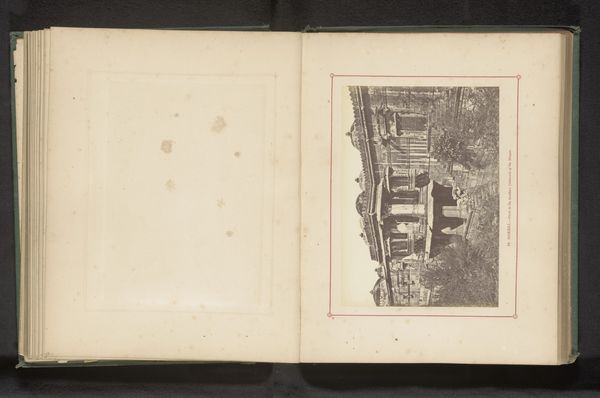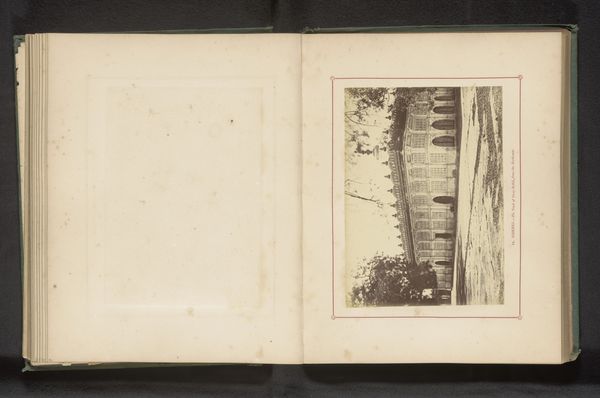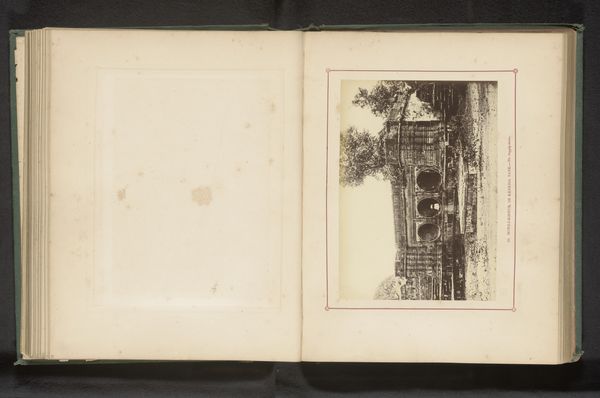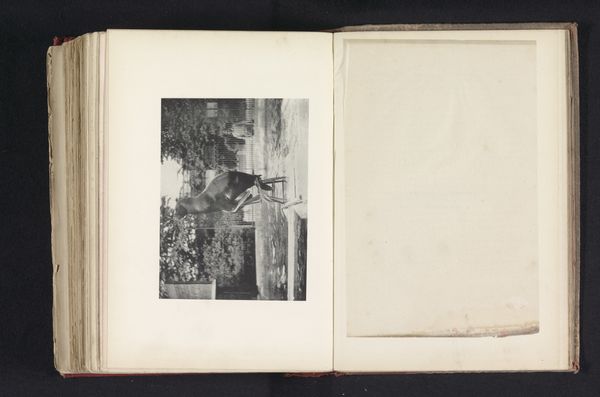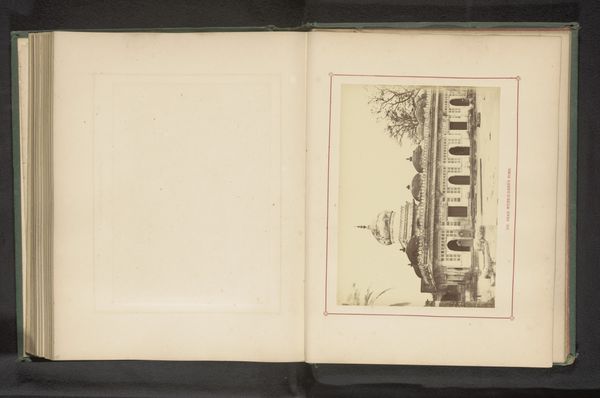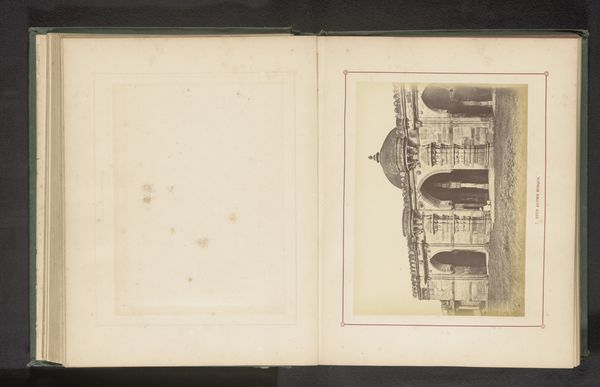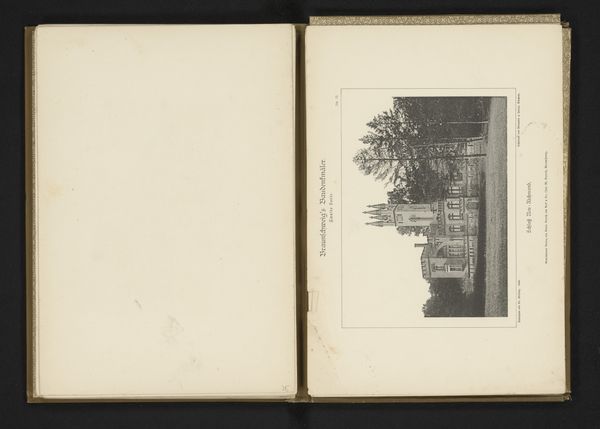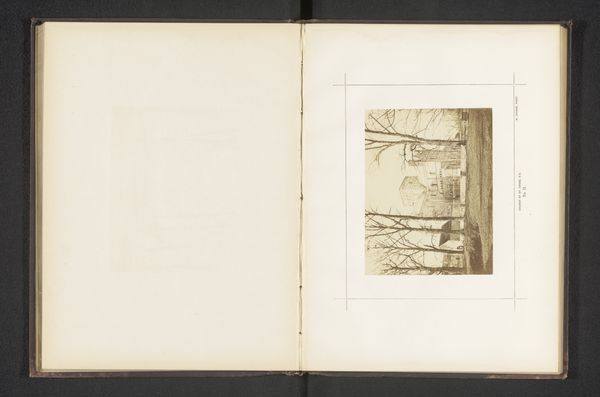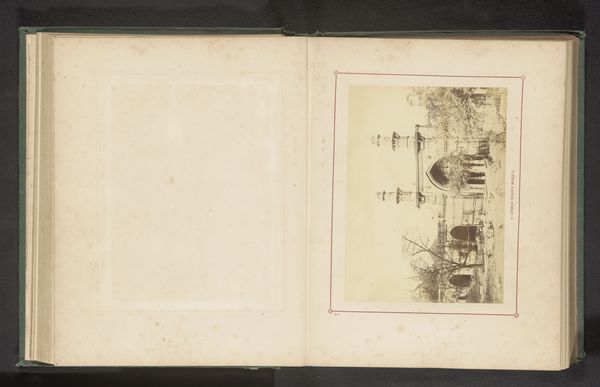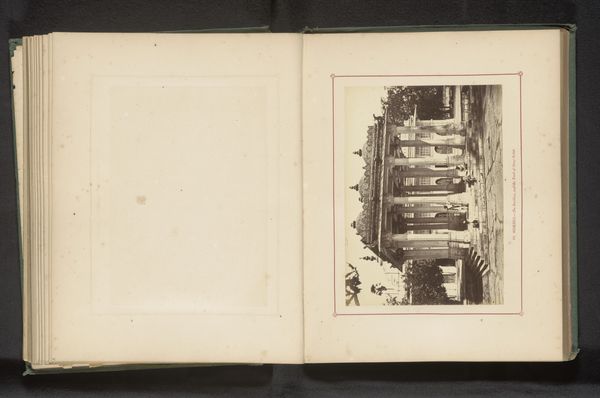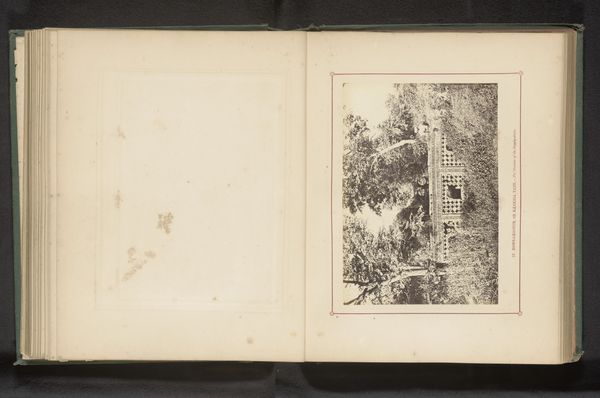
photography, albumen-print
#
asian-art
#
landscape
#
photography
#
cityscape
#
islamic-art
#
albumen-print
Dimensions: height 188 mm, width 135 mm
Copyright: Rijks Museum: Open Domain
Editor: So, this is an albumen print, taken by Thomas Biggs before 1866. It's titled "Decorated corner pillar of the Rani Sipri's Mosque in Ahmedabad." There’s a stark contrast between the detailed pillar and the blank page beside it, it feels almost incomplete. What do you see in this piece? Curator: What strikes me is the way this photograph participates in the visual construction of colonial power. Consider the date; mid-19th century. Photography like this served to document and, in a way, possess the architectural and cultural heritage of India, all while British influence was expanding. The act of framing this specific detail—a decorated pillar—isolates it from the broader social and religious context of the mosque. It turns it into a specimen, almost. Do you see the inscription at the bottom? Editor: Yes, almost like labeling evidence. But, is that always negative? Couldn’t these photographs also foster appreciation and preservation? Curator: That’s a valid point. The power dynamic isn’t always one-way. However, consider who commissioned and controlled these images. How did they circulate? Largely among European audiences. The gaze, even with good intentions, still originates from a position of dominance. Were local communities involved in interpreting or contextualizing these images for wider consumption? Editor: That's a perspective I hadn't fully considered. So, by examining the history of photography as a medium and its socio-political uses, we can uncover some interesting underlying assumptions about who gets to tell the story of cultural heritage. I’ll have to keep this in mind in the future! Curator: Exactly! Thinking about art in this context is crucial to understanding the politics of imagery and cultural representation.
Comments
No comments
Be the first to comment and join the conversation on the ultimate creative platform.
